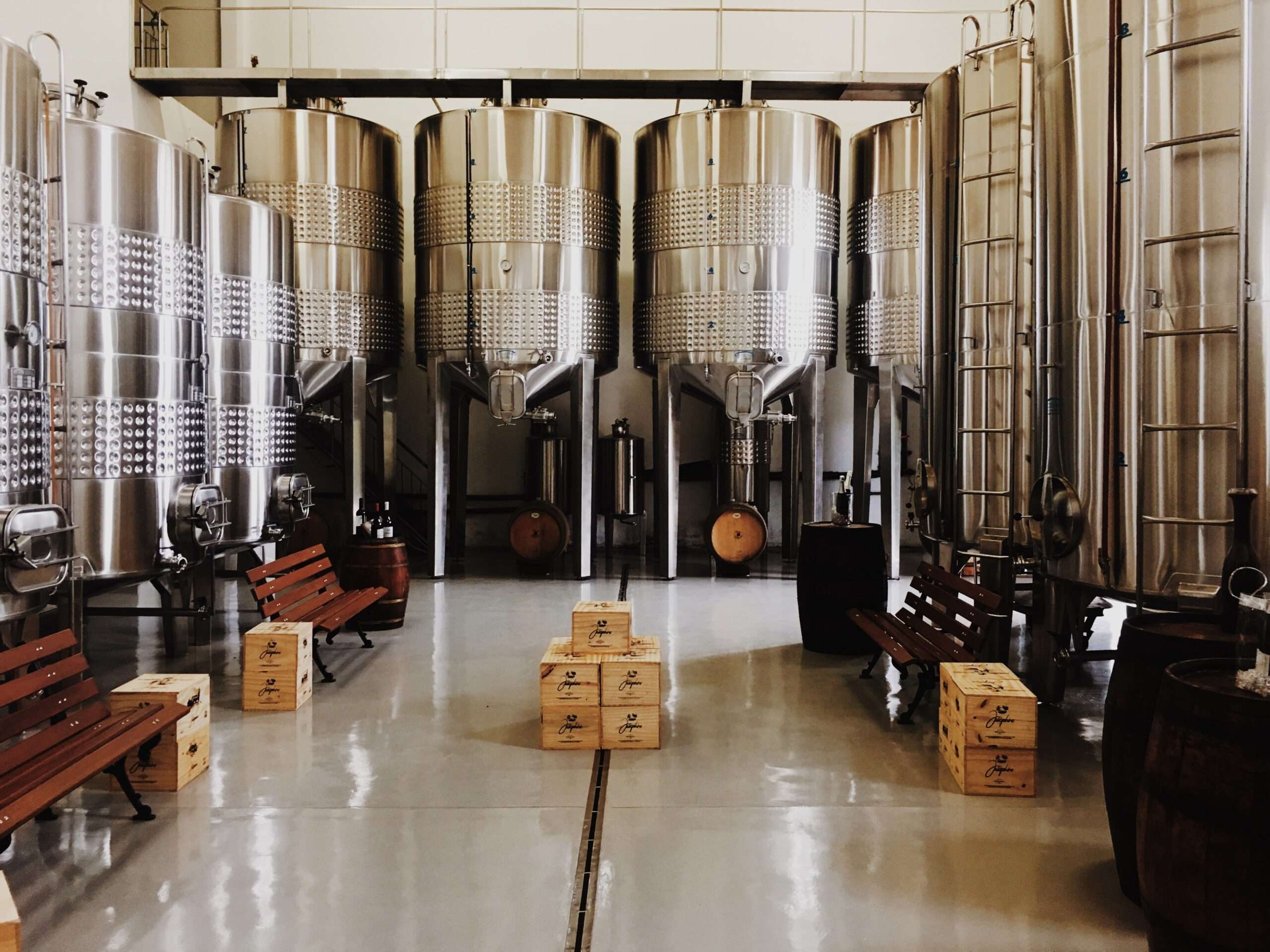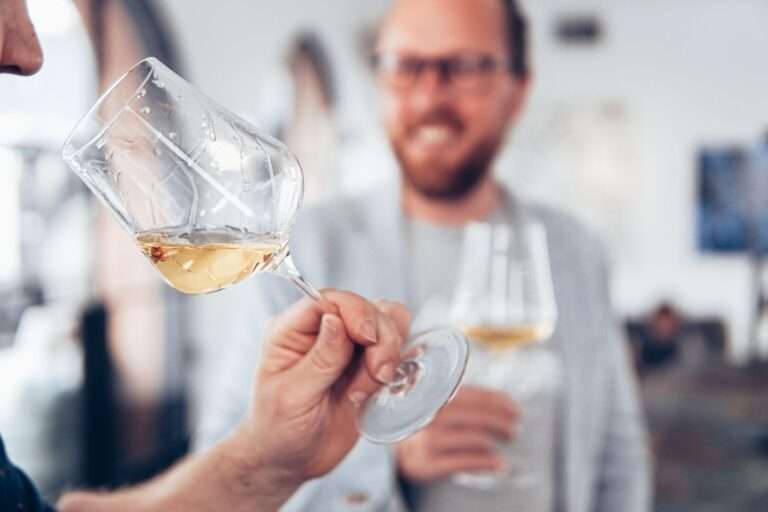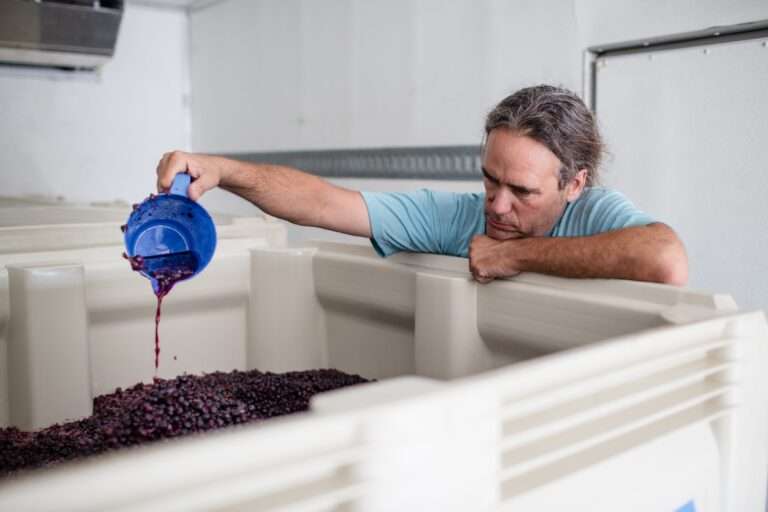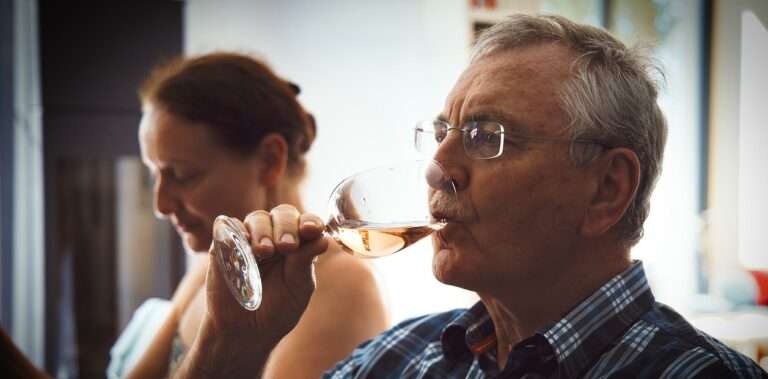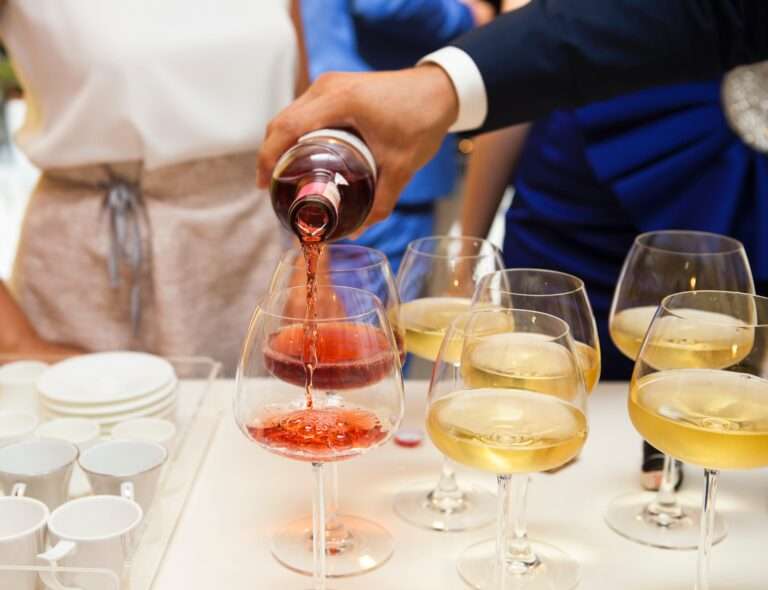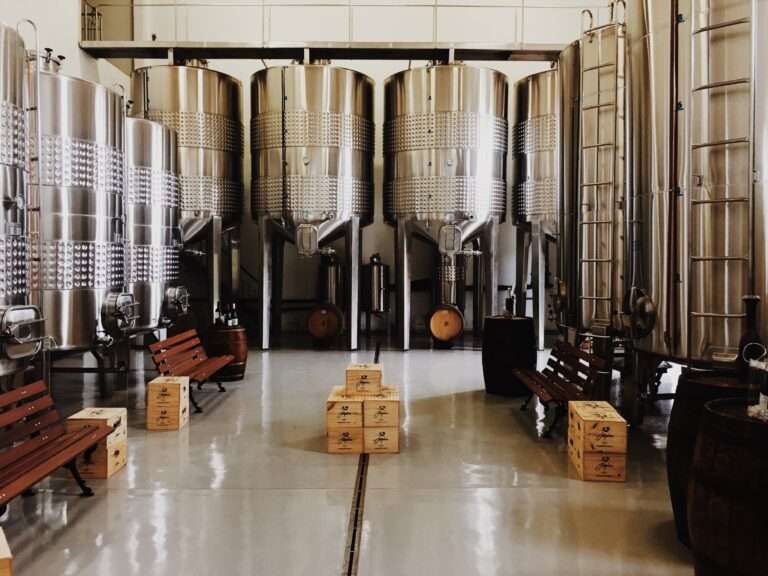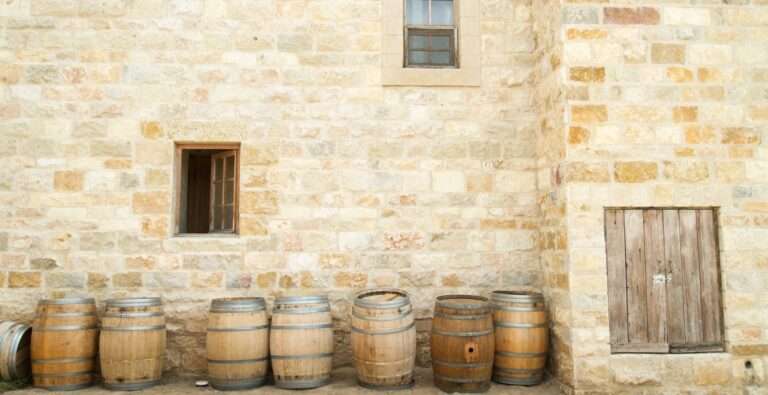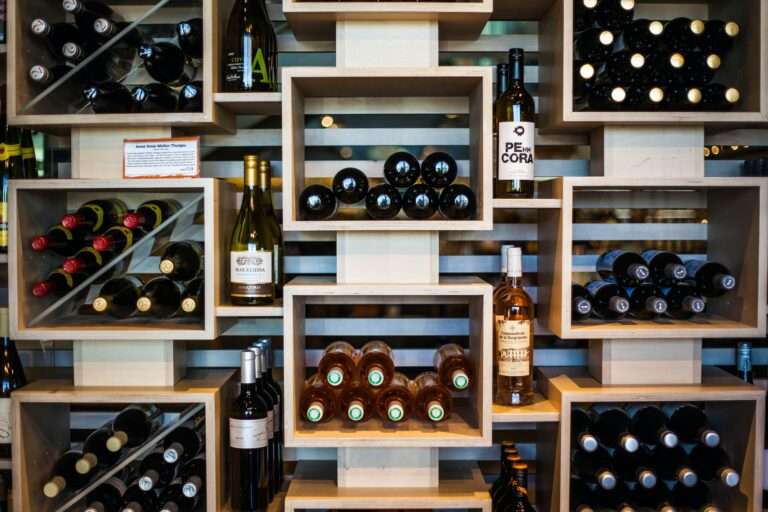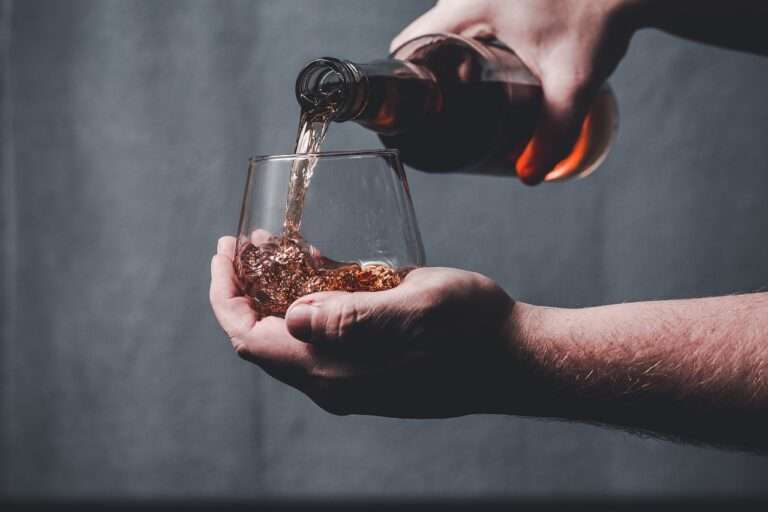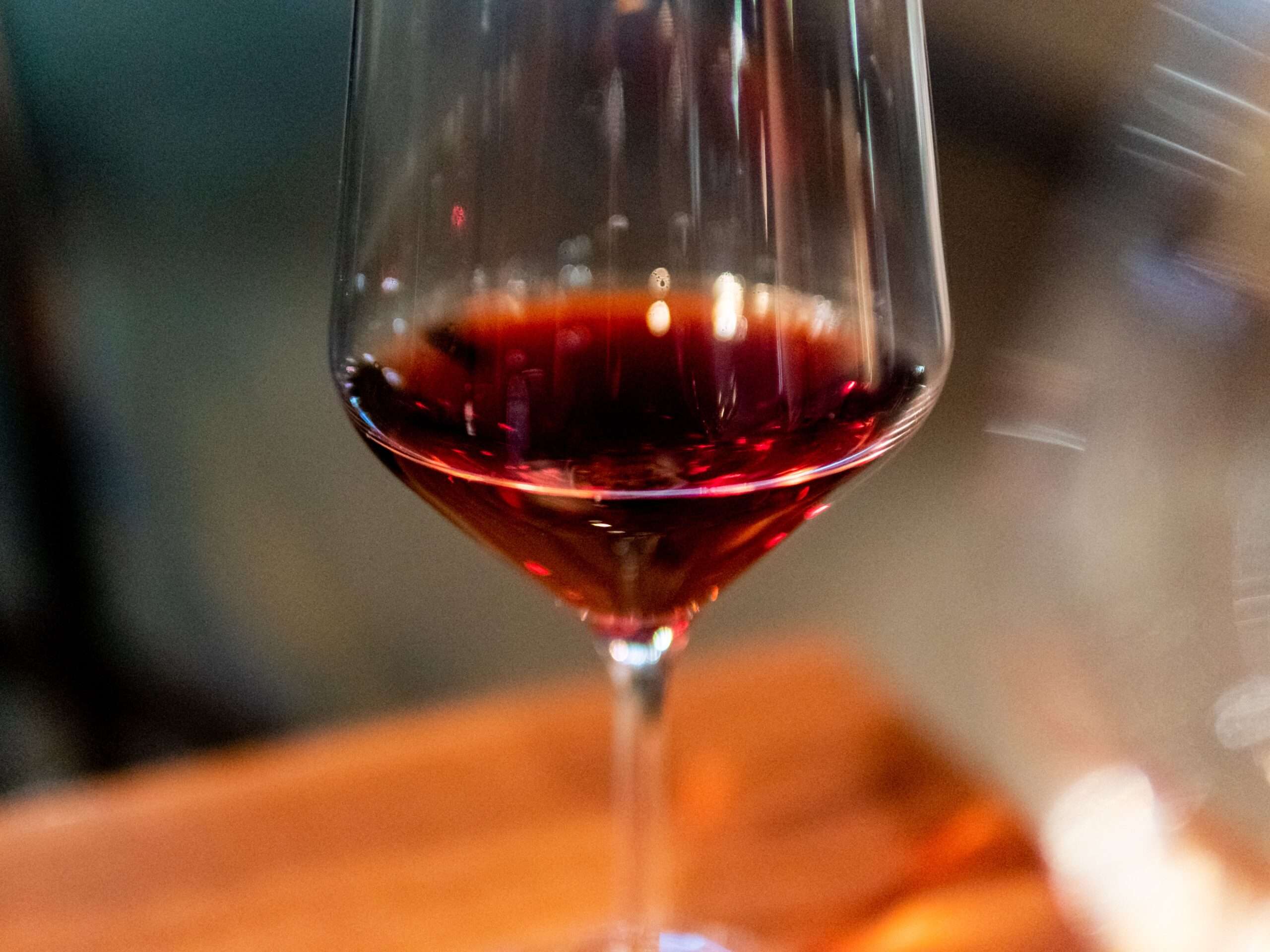Even though people have been making wine for thousands of years, the means of creating this delicious fruit-based drink are complicated. Involving major chemical conversions and many processing methods, wine-making can be simple or complex depending on the wine you make.
Below you’ll find an overview of the steps involved in the wine-making process and the supplies used to bring grapes from the vine to the bottle. From picking to fermentation and filtration, the basic steps for making wine are similar regardless of the wine you’re making.
How Is Grape Juice Converted Into Alcohol?
Making wine involves converting grape juice or other fruit juices into alcohol. This conversion is achieved through a chemical process known as fermentation.
In alcoholic fermentation, the sugars that convert to alcohol ethanol include:
- Fructose
- Sucrose
- Glucose
Grapes aren’t the only fruit that is fermented to make wine. Wine is also historically made from other sugary sources such as orchard fruit and berries. There is also a wine made from fermented honey known as mead. Like grape wine, mead is often blended with other fruits to create a complex, layered flavor and aroma in the final product.
Still Wine Production vs. Sparkling Wine Production
There are two main categories of commercial wine production: still wine production and sparkling wine production.
Still wine production is the traditional process of wine-making that produces a wine with no carbonation, while sparkling wines often have carbon dioxide injected into them to give them a bubbly, effervescent mouthfeel.
Supplies Used in Wine-Making
There are several different specialized tools that are used to make wine, both in home-brewing operations and in industrial wine production.
Here is an overview of the tools needed to make wine:
- Primary fermenter: The primary fermenter is the container in the wine-making process where the juice of the grapes is fermented using brewer’s yeast. The primary fermenter should be at least twenty percent larger than the amount of wine made and should be made of food-safe, easily sanitized materials.
- Secondary fermenter: The secondary fermenter is an airtight container that the fermenting wine is moved into after the primary fermentation is complete. For example, wine may undergo primary fermentation in a stainless steel barrel or carboy but will be moved to oak barrels for secondary fermentation to improve the wine’s flavor.
- Air lock: The airlock is a one-way valve on the secondary fermenter that prevents the wine from oxidizing. To do this, it vents carbon dioxide as the wine ferments while preventing oxygen from getting into the fermenter in the process.
- Hydrometer: A hydrometer is a tool that helps you track the amount of alcohol in your fermenting wine as it sits in the secondary fermenter.
- Bottles: Wine bottles are the traditional container used for packaging wine in both homebrew and industrial wine production. Recycling commercial wine bottles is a good way to save money on supplies if you’re making wine at home.
- Closures: Closures are needed to seal the bottles of wine once they’re filled. Wine-makers can use screw caps or corks to close up their finished bottles.
- Corker: If the wine produced will be closed with a corker, a manual or electric corker is needed to force the corks into the bottle tops.
- Funnel: A funnel is used in moving the fermenting wine from the primary fermenter to the secondary fermenter, and is also used to pour wine into the bottles during bottling.
- Sanitation equipment: Making wine requires sanitation equipment, such as wire brushes, to keep all wine-making equipment sterile. This helps prevent wild yeast and other microbes from getting into the wine while it’s fermenting.
If you have these basic wine-making tools, you can get started making wine at home with fruit juice and brewer’s yeast.
Stages of Wine-Making
Wine-making is a relatively complex process and involves several steps to go from juice and brewer’s yeast to a finished bottle of wine. Below you’ll read an overview of the wine-making process from harvest to bottle.
Harvesting and Picking Grapes for Wine
The first step of making wine is harvesting and picking the grapes. Even in commercial wine-making operations, grapes harvested for wine are typically harvested by hand. This helps prevent the grapes from being damaged during harvest.
How Do You Know When Grapes Are Ready for Picking?
Wine grapes are picked using manual or electric shears. Depending on the wine variety, the grapes are picked anywhere from thirty to seventy days after appearing on the vines. This allows the fruit time to ripen, increasing the number of sugars while decreasing the amount of acidity the grapes contain.
To determine whether the grapes are ready for harvesting, wine-makers use a portable refractometer to determine the number of sugars present in them.
Manual Harvesting vs. Mechanical Harvesting
Table grapes require hand harvesting, but other varieties can be harvested using mechanical harvesting. Mechanical harvesters are used by large-scale wine production operations since they allow vintners to harvest large fields of grapes in a short amount of time.
Night Harvest vs. Day Harvest
In many vineyards, a night harvest is preferred to a day harvest.
This is for several reasons:
- Grape stability: The sugars in grapes are more stable at night than during the day when the grapes are undergoing photosynthesis. Night harvests enable the grapes to be picked when their flavors and aromas are most concentrated, too.
- Cooler temperatures: Many grapes are grown in warm regions of the world and harvested in hot weather. Night harvesting grapes makes the harvest less taxing on workers, especially if the grapes are being harvested by hand.
- Energy efficiency: Along with making harvesting conditions easier on the pickers, picking wine grapes in a night harvest takes less energy since the grapes don’t have to be cooled down before maceration. This results in a better-tasting wine and a more efficient winery operation.
While not all wineries perform their harvest at night, many do for the reasons above. No matter when grapes are picked, the winery workers are very conscious of the grapes’ condition and chemical composition during harvest.
Sorting Grapes for Wine
Once the grapes have been harvested from the field in whole bunches, the next step in their journey to becoming wine is the sorting table, also known as the table de trie.
Before the grapes themselves are sorted, the grapes are picked over for any materials other than grapes, also known as MOG. Examples of MOG include branches, leaves, and even harvesting tools like shears.
After the MOG is removed from the grapes, the grapes themselves are sorted for bad products. Damaged grapes that would be removed rather than used in the wine include grapes with rot, sunburn, uneven ripening, and raisins.
Destemming Grapes for Wine
Once the grapes from the field have been sorted, the next potential step in the wine-making process is destemming. Not all wine producers remove the stems before pressing the grapes, but leaving the stems intact (known as whole cluster pressing) can increase the number of tannins in the wine. This is generally considered an old-world style of wine production.
Most wines have the stems removed before pressing. This leads to wine with a softer, more refined flavor.
Pressing Grapes for Wine
The process for pressing grapes for wine is slightly different depending on whether you’re pressing grapes for white wine or red wine. In white wine, the stems, skins, and seeds are all completely removed from the grape juice before the juice moves on to primary fermentation.
In red wines, the wine is left in contact with the must, or grape pulp, throughout fermentation. This is what leads to red wine’s dark pigmentation, which leeches into the wine from the macerated grape skins.
Primary Fermentation in Wine-Making
After the wine grapes have been pressed, the next major step in the wine-making process is primary fermentation. This is the point where the sugars in the wine are fermented and converted into alcohol.
Adding Yeast for Primary Fermentation
For the sugars in wine to be turned into alcohol, a chemical process called fermentation has to occur. To ferment wine, wine-makers add a special kind of yeast (brewer’s yeast) that feeds on the sugars in the wine and leaves alcohol and carbon dioxide as a by-product.
Carbon Dioxide Release in Primary Fermentation
Carbon dioxide is released in wine during primary fermentation, but typically not in large enough quantities to make the wine carbonated.
Even in still wine production, some carbon dioxide release is expected. For carbonated or sparkling wines, like champagne, an additional yeast called liqueur de tirage is added during secondary fermentation to produce additional carbonation.
Racking Grapes for Wine
Racking is a step in the wine-making process that occurs at the same time that primary fermentation, usually right after the primary fermentation process. When fermenting wine is racked, it is filtered to remove any dead yeast cells, seeds, skins, and other sediment that might be present in the wine. This helps improve the wine’s clarity and flavor as it ferments.
After being racked, red wine is usually transferred to a barrel to continue secondary fermentation. Red wine may also be racked several additional times during the aging process to improve its flavor depending on the variety of wine and the preferences of the wine-maker.
Barrel Aging in Wine Fermentation
Barrel aging is an important step in secondary fermentation of wines. This secondary fermentation leads to malolactic conversion that changes the chemical composition of the wine.
Barrel aging improves the flavor of wine in two ways:
- Texture: Barrel aging helps give many wine varieties a rounded, smooth mouthfeel.
- Flavor: Depending on the types of barrels used in secondary fermentation, they can impact the flavor profile of the wine in significant ways. For example, aging Chardonnay wine in oak barrels lends the wine’s flavor profile notes of vanilla and butter.
Barrel aging is also a popular method for including the lees, or leftover yeast deposits, in the fermentation process. Aging wine on this leftover yeast gives it a soft mouthfeel and a warm, nutty flavor.
Malolactic Conversion in Wine-Making
So how do barrel aging and secondary fermentation give the wine a rounder, buttery flavor, and mouthfeel? The answer is a chemical process known as malolactic conversion.
What Is Malolactic Conversion?
Malolactic conversion is a chemical process that converts malic acid into lactic acid. Malic acid has a tart, acidic flavor, while lactic acid has a soft, creamy, nutty flavor. Lactic acid is also found in milk.
Malolactic conversion is generally used to reduce a wine’s acidity and also remove some of the carbon dioxide generated during fermentation to create a still wine.
Aging and Testing Wine in Wine-Making
The aging process is different depending on which kind of wine is being made. Some wines are not aged long at all (known as young wines) while others undergo a rigorous aging process before being sold. Aging can change many components of the wine such as taste, aroma, opacity, and color.
Here are a few of the factors that are involved in aging wine during the secondary fermentation process:
- Oxidation: One of the key measures that wine-makers try to control during aging is the rate of oxidation. Aging wine well involves limiting the amount of oxidation and avoiding spoilage. The two factors in wine that allow it to withstand oxidation over long aging periods are acidity and tannins.
- Grape variety: Grape variety is another factor that influences how well wine ages. Certain grapes, such as Riesling and Cabernet Sauvignon, are wines that naturally age well. Because they contain a high level of acidity, they are able to maintain good quality in storage for decades.
During the secondary fermentation process, it’s also important that wine-makers monitor the state of the wine carefully to control the aging process and the components of secondary fermentation. Wine tasting is typically conducted with a hydrometer that is used to measure the concentration of sugars in the wine at any given point in the fermentation process.
Blending and Fining Wine in Wine-Making
Blending and fining wine are some of the last steps involved in completing the chemical composition of the wine before it’s ready to be bottled. These methods involve putting the finishing touches on the wine by performing final racking operations or mixing different batches of wine together.
Fining Wine
During the fining process, a few different tasks are usually performed. The first task is a trial tasting of the wine to test its flavor profile. This trial tasting is known as a bench trial. This helps wine-makers identify any potential off-flavors or last-minute tweaks that need to be made to the wine’s flavor.
Here are a few other steps involved in fining wine:
- Adding sulfur: In many wines, sulfur is added during the fining process to help reduce oxidation and improve the wine’s shelf life.
- Sparging: Sparging is removing as much of the oxygen from the surface of the wine as possible. This is usually accomplished by pumping inert gasses such as argon and nitrogen into the fermentation tank to push out any existing oxygen.
- Adding additives: Certain additives such as bentonite clay can be used to help stabilize wine against heat exposure and increase the wine’s clarity. After stabilizing the wine, these additives are then filtered out of the final product. Other additives can be used to improve aroma or remove excess tannins.
- Cold stabilization: Just as wine has to be protected against heat exposure with chemical additives, it also has to be protected against cold exposure. Cream of tartar is a common additive that is used to help prevent the formation of ice crystals in the wine at cold temperatures. Like bentonite clay, cream of tartar is filtered out after use.
- Filtration: Filtration is the final step in fining wine after the additives are used to perform the finishing touches on the wine’s composition. Sterile filtration is recommended for wines that have a volatile acidity or sweet wines, while standard filtration is often used on other wine varieties.
In many cases, the fining process in wine-making is one of the steps that can elevate a good wine into a great wine. Just as much art as science, fining wine requires a strong knowledge of the chemistry involved in wine-making as well as knowledge of the terroir, or growing conditions, that the grapes were cultivated in.
Blending Wines
In some varieties of wine, such as blush wines, different batches of wine are blended together prior to the fining process. For example, blush wines are a blended mix of white and red wines in varying proportions that depend on the flavor and color desired by the wine-maker. These wines contain a nice mixture of the qualities and flavor profiles of both wine varieties.
Bottling and Packaging Wine in Wine-Making
After fining and filtration, the final step in wine-making is bottling and packaging the wine. After being funneled into wine bottles, the bottles can be closed with a screw cap lid or a traditional wine cork.
Why Are Wines Made with Screw Cap Lids?
If you’re not familiar with wine-making, you might consider a screw cap lid a sign of an inferior or inexpensive grocery store wine. However, more and more wineries are swapping to this method of closure for their wine bottles. The reason is a phenomenon known as corking.
While many wines are closed with traditional cork systems, the risk of using corks for closing wine is cork taint. This is a chemical reaction caused by microbial fungus on the cork that can negatively impact the taste and aroma of the wine. This chemical reaction causes the wine to taste and smell like rotting cardboard.
It’s estimated that between seven and eight percent of all bottled wines end up with some degree of cork taint. Because of this issue, many modern wineries have swapped to a screw cap system so that the wine can be hermetically sealed without the use of a wood cork.
How Long Does Wine Take to Make?
If you include the time it takes to bring a grapevine from its first leaves through its first harvest, it can take over three years to produce wine. Even after a grapevine is old enough to put out grapes, it may not be harvested to create the first vintage for several years until the vines have had time to mature.
It can take years to get grapes from the field to the bottle, but the actual time spent making the wine is the shortest part of the process. Fermentation of most wine styles can be accomplished in as little as three to four weeks, although secondary fermentation may occur as the wine is allowed to age for a few more weeks after that.
How Long Should Wine Rest Before Drinking?
After a fresh wine is bottled, it’s customary for the wine to be set aside for a period of at least three months.
This allows any sediment in the wine to clear, ensures cold stabilization, and improves the wine’s clarity.
What Is Bottle Shock in Wine-Making?
If you’re getting into homebrewed wine, you may hear a term tossed around called “bottle shock.” This refers to a sudden drop in quality in wine after bottling that is the result of too much oxygen absorbed into the wine during the bottling process or during transport. Sloshing a bottle of wine around violently can force air and oxygen through the cork.
In bottle shock, the oxygen in the wine causes the build-up of a chemical compound called acetaldehyde. This chemical can give the wine an aroma of rotting nuts or apples, and can greatly flatten the wine’s flavor profile.
The good news is that the effects of bottle shock are usually temporary. Once the wine has been allowed to rest and stabilize, the levels of acetaldehyde in the wine decrease and it returns to its natural flavor profile. This is one of the reasons why resting wine after bottling is so important.
Wine-Making Is Both Art and Science
The fermentation process involved in making wine might seem simple in theory. However, there are so many extenuating factors that go into the chemistry of wine-making that it can take decades to learn to do it properly.
Whether you’re making wine as part of a large-scale vineyard operation or you’re just trying to brew a batch of wine at home, you have to understand the chemistry behind the process to make the wine work.

